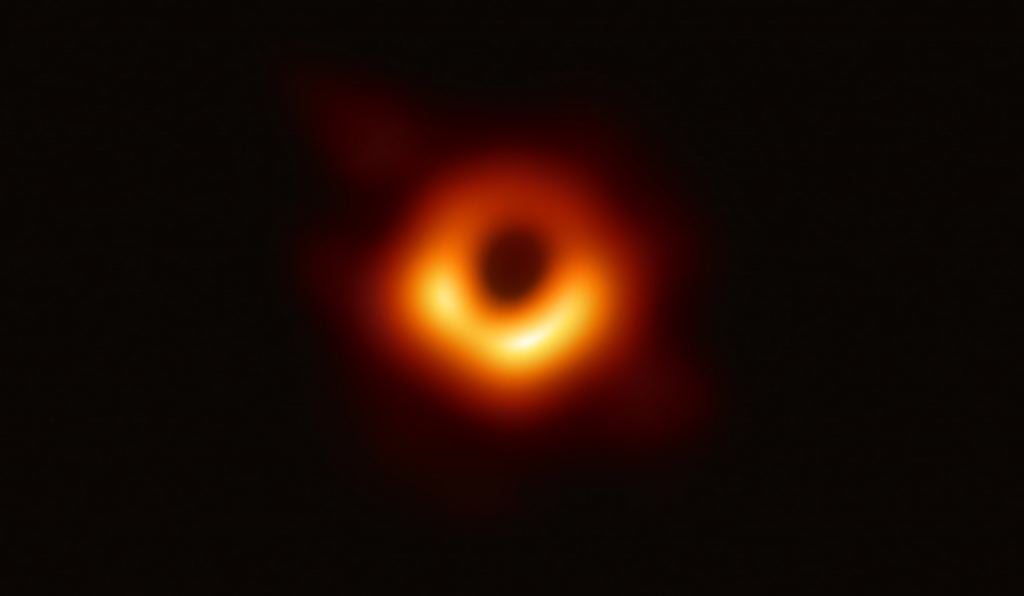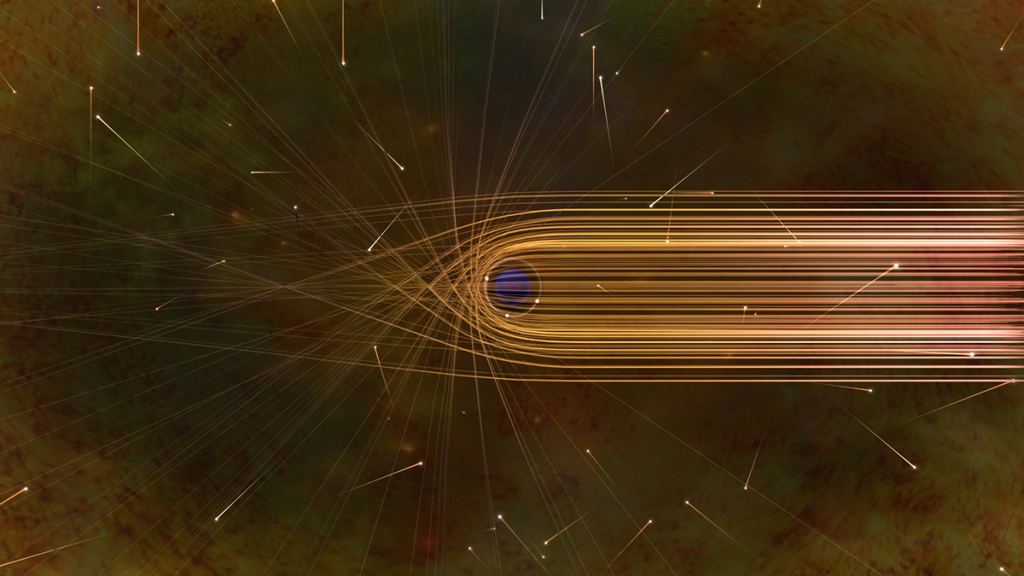In 2019 the Event Horizon Telescope gave us our first direct image of a black hole. It was a powerful image, but not one with much detail. It looks like a blurry orange donut. To be fair, the real meat of the discovery was in the data, not the image. And as a recent study shows, there's a great deal more in the data than what we've seen.
One of the important things to understand about the EHT image is that it doesn't show the glow of the black hole itself. Black holes don't emit light directly. And unlike less detailed images of supermassive black holes we have, the glow isn't due to jets of plasma or a torus of superheated gas around the black hole. Instead, the image shows radio light that was focused by the black hole.
The black hole in M87 is bathed in light from nearby gas, including radio light. When a particular beam of light passes close to the black hole, the warping of spacetime causes it to change direction a bit. We've observed the slight deflection of light from things such as the stars and galaxies numerous times, but close to a black hole the light can change direction significantly. It could loop around to make a right-angle turn, or even end up heading back from the direction it came. The closer the path to the black hole, the more radical the change in direction.
Light is passing near the black hole in all sorts of directions, but from our perspective, we can only see the light that is focused toward us. Any beam of light that loops around the black hole and heads our way, we should be able to see. It turns out that the black hole can act as a really strong lens. Light can pass extremely close to the black hole, and get focused directly toward us. So what we should see is a thin circle of light known as the photon ring. Part of the right will be brighter since the rotation of the black hole also gives the light a bit of an energy boost. The size of the ring depends on the mass of the black hole, and the brightness of the brighter region depends on the black hole's rotation.
So why doesn't the EHT image show the photon ring? Unfortunately, the space between us and the black hole isn't completely empty. There is still a surrounding region of cold gas, which the light has to pass through to reach us. Some of the light scatters along the way, making the image more blurry than we'd like. This is where the new study comes in.
The diffuse glow of the EHT image tells us not only about the black hole but also about the diffuse gas surrounding the black hole. The team noted that there are essentially two images within the EHT data. One is that of the photon ring itself, and the other is the blurry glow of the surrounding region. Using new imaging algorithms, the team was able to separate the two, revealing the black hole's photon ring.
It's a great example of the power of analyzing data in new ways. Modern astronomical observations gather so much data that there is often much more information than we might suspect. As we learn how to process data more effectively, we can reveal layers hidden under the surface.
Reference: Broderick, A. E., et al. " The Photon Ring in M87*." *The Astrophysical Journal* 935.1 (2022): 61.
 Universe Today
Universe Today


